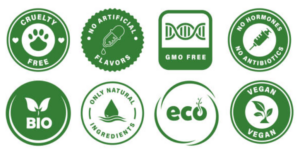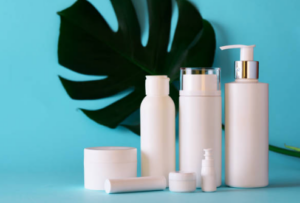Empowering Consumers

In recent years, there has been a significant shift towards cruelty-free beauty products as consumers become more conscious of the impact their purchases have on animals and the environment. With so many brands claiming to be cruelty-free, navigating the landscape of labels can be overwhelming. In this guide, we’ll explore what it means for a beauty product to be cruelty-free and provide tips on how to decipher labels to ensure you’re making ethical choices in your beauty routine.
1. Understanding Cruelty-Free Certification
The term “cruelty-free” generally refers to products that have not been tested on animals at any stage of the production process. However, it’s important to note that the term is not regulated by any governing body, which means that brands can use it somewhat loosely.
To ensure a product is truly cruelty-free, look for certifications from reputable organizations such as Leaping Bunny, PETA (People for the Ethical Treatment of Animals), or Choose Cruelty-Free. These certifications require brands to adhere to strict criteria and undergo regular audits to verify their cruelty-free status.
2. Deciphering Cruelty-Free Claims
In addition to looking for certifications, it’s important to carefully read product labels and marketing claims to determine if a brand is truly cruelty-free. Keep an eye out for phrases like “not tested on animals,” “cruelty-free,” or “vegan,” but be aware that these terms can sometimes be misleading.
Some brands may claim to be cruelty-free while still selling their products in countries like China, where animal testing is required by law for certain cosmetics. Look for additional information on a brand’s website or reach out to them directly to clarify their animal testing policies and practices.
3. Investigating Parent Companies
Another factor to consider when determining if a brand is truly cruelty-free is its parent company. Some brands that claim to be cruelty-free are owned by larger companies that engage in animal testing. While the subsidiary brand may not test on animals, purchasing their products indirectly supports the parent company’s practices.
Researching a brand’s parent company can help you make more informed purchasing decisions and ensure that your money is not inadvertently supporting animal testing. Websites like Cruelty-Free Kitty and Ethical Elephant provide comprehensive lists of cruelty-free brands and their parent companies to help consumers navigate this issue.
4. Exploring Alternative Testing Methods
Advancements in technology have led to the development of alternative testing methods that are more humane and accurate than traditional animal testing. Look for brands that are investing in these alternative methods, such as in vitro testing, computer modeling, and human volunteer studies.
Supporting brands that prioritize innovation and ethical testing practices not only helps advance cruelty-free beauty but also sends a message to the industry that there is a demand for more humane testing methods.
5. Researching Ingredient Sources
In addition to animal testing, some consumers may be concerned about the use of animal-derived ingredients in their beauty products. While a product may be cruelty-free in terms of testing, it’s important to consider the source of its ingredients to ensure they align with your values.
Look for brands that are transparent about their ingredient sourcing practices and offer vegan options for those who prefer to avoid animal-derived ingredients altogether. Plant-based alternatives are becoming increasingly common in the beauty industry, making it easier than ever to find cruelty-free and vegan products.

6. Supporting Ethical and Sustainable Brands
Ultimately, choosing cruelty-free beauty products is about more than just avoiding animal testing—it’s about supporting brands that prioritize ethics, sustainability, and transparency in all aspects of their operations. Look for brands that are committed to reducing their environmental impact, using ethically sourced ingredients, and giving back to their communities.
By supporting ethical and sustainable brands, you’re not only investing in products that are better for the planet and its inhabitants but also sending a message to the beauty industry that ethical practices are non-negotiable.
Navigating the world of cruelty-free labels can be challenging, but with a little knowledge and research, it’s possible to make informed choices that align with your values. By understanding what it means for a beauty product to be cruelty-free, deciphering labels and marketing claims, investigating parent companies, exploring alternative testing methods, researching ingredient sources, and supporting ethical and sustainable brands, you can build a beauty routine that is both ethical and effective.
Remember, every purchase you make is a vote for the kind of world you want to live in. By choosing cruelty-free beauty products, you’re not only taking a stand against animal testing but also supporting brands that are committed to making a positive impact on the world. Together, we can create a more compassionate and sustainable beauty industry for generations to come.




